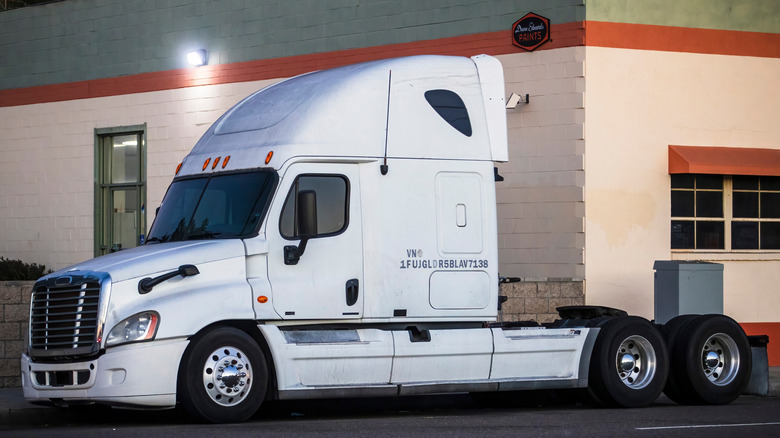What's The Difference Between Axle-Forward And Axle-Back Trucks?
There are a huge number of variations in the trucking world, and picking whether you require a light, medium, or heavy-duty truck is only the start of it. Choosing whether you require an axle-forward or axle-back truck is another consideration to make; these can also be referred to as set-forward and set-back axles.
These names are quite self-explanatory. With an axle-forward design, the front axle is pushed as far towards the nose of the truck as possible, whereas with an axle-back design, the front axle is tucked closer toward the cab. One example of a truck with an axle-forward design would be the now discontinued Kenworth W900, whereas some Freightliner Cascadia models sport axle-back configurations.
Between the two styles are a number of key differences, with perhaps the most obvious being the styling. The front axle's placement will of course change the positioning of the front wheels, so it's quite easy to distinguish between the two styles. This may be the most obvious difference, but it's not why truckers pick one design over the other. Rather, truckers will typically favor a particular axle design due to the aerodynamic and maneuverability traits it offers.
Axle-forward trucks are the more popular design
Axle-forward designs help when it comes time to sell the truck, as this design is more popular than trucks with axle-back designs. The primary reason for this is that axle-forward trucks can support longer wheelbases, which means they offer more room for cargo, and they can also haul heavier loads, all of those being clear benefits for truckers. Some also argue that this set-forward design delivers a smoother ride, and with truckers spending long periods behind the wheel of their trucks, prioritizing comfort is no bad decision.
Axle-back trucks do have their benefits, though. For example, the set-back design will usually favor aerodynamics, as it enables the truck to sport a longer, sleeker hood design, which can cut through the air easier than a slab-fronted axle-forward model. This is why some of the semi trucks with the best mpg ratings sport set-back axle designs.
Furthermore, going axle-back will generally allow the truck to sport a tighter turning radius, which would prove especially useful on job-sites, where space is a premium. This extra level of control, coupled with the enhanced aerodynamics, may be enough for some to overlook the obvious benefits of an axle-forward design, especially if there is little need for carrying overly large or heavy loads.

